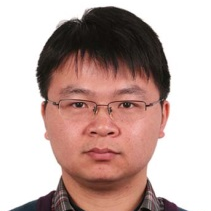Deep Learning for Computer Vision
A special issue of Electronics (ISSN 2079-9292). This special issue belongs to the section "Computer Science & Engineering".
Deadline for manuscript submissions: closed (15 August 2023) | Viewed by 22422
Special Issue Editors
Interests: manchine learning, data mining, computer vision
Special Issues, Collections and Topics in MDPI journals
Interests: deep learning; computer vision
Interests: deep learning; representation learning; data mining
Interests: image analyisis; computer vision; pattern recognition; deep learning
Special Issues, Collections and Topics in MDPI journals
Special Issue Information
Dear Colleagues,
Deep learning has achieved significant successes in many areas of application, such as object recognition, recommender systems and natural language processing. Due to the vast amount of images and videos available on the Internet, deep learning technologies are also adopted in many computer-vision tasks such as image generation and enhancement, as well as in object detection and tracking, and greatly improve the development of the computer-vision area.
This Special Issue aims to provide an academic platform to publish high-quality research papers on deep learning methods and their applications to computer vision, including (but not limited to) extended versions of the outstanding SDAI2022 (https://www.sdaai.org.cn/sdai2022) papers.
Potential topics of interest for this Special Issue include:
- Deep learning theory.
- Deep learning algorithms.
- Neural architecture search.
- Generative neural networks.
- Deep reinforcement learning.
- Object recognition.
- Object detection.
- Object tracking.
- Image generation.
- Super resolution.
- Other deep learning applications for computer vision.
Prof. Dr. Xiushan Nie
Dr. Guoqiang Zhong
Dr. Yongshun Gong
Prof. Dr. Bin Fan
Dr. Xin Li
Guest Editors
Manuscript Submission Information
Manuscripts should be submitted online at www.mdpi.com by registering and logging in to this website. Once you are registered, click here to go to the submission form. Manuscripts can be submitted until the deadline. All submissions that pass pre-check are peer-reviewed. Accepted papers will be published continuously in the journal (as soon as accepted) and will be listed together on the special issue website. Research articles, review articles as well as short communications are invited. For planned papers, a title and short abstract (about 100 words) can be sent to the Editorial Office for announcement on this website.
Submitted manuscripts should not have been published previously, nor be under consideration for publication elsewhere (except conference proceedings papers). All manuscripts are thoroughly refereed through a single-blind peer-review process. A guide for authors and other relevant information for submission of manuscripts is available on the Instructions for Authors page. Electronics is an international peer-reviewed open access semimonthly journal published by MDPI.
Please visit the Instructions for Authors page before submitting a manuscript. The Article Processing Charge (APC) for publication in this open access journal is 2400 CHF (Swiss Francs). Submitted papers should be well formatted and use good English. Authors may use MDPI's English editing service prior to publication or during author revisions.
Keywords
- deep learning
- computer vision
- representation learning
- object recognition
- object detection
- objection tracking






